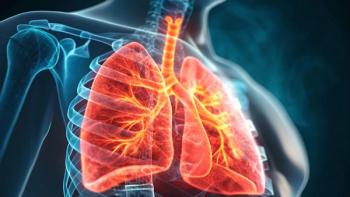
Breast Cancer: What You Need to Know About Types, Staging and Genetics
Key Takeaways
- Breast cancer types include IDC, ILC, HR+, HER2-positive, and triple-negative, each with distinct characteristics and treatment implications.
- Staging from 0 to IV helps determine treatment plans and prognosis, with genetic factors like BRCA1/2 mutations influencing risk.
Breast cancer types, staging, diagnosis, treatment, and survivorship are complex, but understanding them helps patients make informed care decisions.
Breast cancer is a complex disease, but understanding its fundamental aspects can empower you to have more informed and productive conversations with your oncologist. This guide provides an overview of the key topics in breast cancer care, from diagnosis to survivorship.
What Are the Different Types of Breast Cancer?
Breast cancers are classified by the cells they originate from. The two most common types are:
- Invasive Ductal Carcinoma (IDC): This is the most prevalent type, starting in the milk ducts and then invading surrounding breast tissue.
- Invasive Lobular Carcinoma (ILC): This type begins in the milk-producing lobules and spreads to surrounding tissues.
Other types of breast cancer are defined by the presence or absence of hormone and protein receptors:
- Hormone receptor–positive (HR+) breast cancer: the most common type, meaning the cancer grows in response to hormones. This includes estrogen receptor–positive (ER+) and progesterone receptor–positive (PR+) cancers, which often respond well to hormone-blocking therapies
- HER2-positive breast cancer: has higher-than-normal levels of the HER2 protein, which drives cancer growth and can be treated with targeted therapies
- Triple-negative breast cancer: does not have estrogen, progesterone, or HER2 receptors. It is often more aggressive and may require chemotherapy or newer targeted treatments
- Inflammatory breast cancer: a rare, fast-growing cancer that causes swelling, redness, and thickened skin of the breast
- Paget’s disease of the breast: affects the nipple and sometimes the areola, often presenting with redness, scaling, or irritation
- Other rare types: include medullary, mucinous, and tubular breast cancers, each with unique cellular features
How Is Breast Cancer Staged?
Staging describes the extent of the cancer’s spread. It’s a crucial tool that helps doctors determine the best treatment plan and predict the prognosis. The staging system typically uses a scale of 0 to IV.
- Stage 0: Non-invasive cancer, such as ductal carcinoma insitu (DCIS).
- Stage I: Small invasive tumor, contained within the breast.
- Stage II & III: Larger tumors or cancer that has spread to nearby lymph nodes.
- Stage IV: Metastatic breast cancer, meaning it has spread to distant parts of the body like the bones, liver, or lungs.
What Is the Role of Genetics, Such as BRCA1/2, in Breast Cancer?
Genetic factors play a significant role in some breast cancers. Mutations in the BRCA1 and BRCA2 genes are the most well-known. These genes normally help repair cell damage and prevent cancer development. A mutation in one of these genes significantly increases a person's risk of developing breast cancer and other cancers, such as ovarian cancer. Genetic testing can determine if you carry one of these mutations, which may influence your treatment and screening plan.
Breast Cancer Diagnosis: What Tests Are Used?
A definitive diagnosis of breast cancer is made through a biopsy, where a small tissue sample is taken and examined by a pathologist. Additional tests help classify the cancer, including:
- Hormone Receptor Status (ER/PR): This test determines if the cancer cells have receptors for the hormones estrogen (ER) and progesterone (PR). Cancers that are ER-positive or PR-positive may be treated with hormone therapy.
- HER2 Status: This test checks for the presence of the HER2 protein. Cancers that are HER2-positive tend to grow faster but can be treated with targeted therapies.
- Ki-67: This is a marker that indicates how fast the cancer cells are dividing.
What Is the Breast Cancer Index (BCI)?
For some patients with early-stage, ER-positive breast cancer, the Breast Cancer Index (BCI) is a genomic test that can help predict the likelihood of cancer recurrence after five years of hormonal therapy. This information can help you and your oncologist decide whether to continue hormone therapy beyond five years.
What Are the Available Breast Cancer Treatment Options?
Treatment plans are highly individualized and often involve a combination of therapies.
- Surgery for Breast Cancer: This is often the first step to remove the tumor. Options include a lumpectomy, which removes only the tumor and a small amount of surrounding tissue, or a mastectomy, which removes the entire breast.
- Radiation Therapy:This therapy uses high-energy rays to kill any remaining cancer cells in the breast or chest wall. It is often used after a lumpectomy.
- Chemotherapy: These powerful drugs are used to kill fast-growing cancer cells throughout the body. Chemotherapy may be given before surgery to shrink a tumor or after surgery to destroy any remaining cancer cells.
- Hormone Therapy: This treatment is for ER-positive and PR-positive cancers. It works by blocking hormones from reaching cancer cells or by reducing hormone levels in the body to prevent cancer from growing.
- Targeted Therapy: This treatment targets specific characteristics of cancer cells, such as the HER2 protein, with less harm to normal cells. It may include monoclonal antibodies, small molecule inhibitors, or antibody-drug conjugates, which deliver chemotherapy directly to cancer cells while sparing healthy tissue.
“Breast cancer is moving fast,”
How to Manage Side Effects in Breast Cancer Treatment
Treatments can have various side effects, such as fatigue, nausea, or nerve pain. Discussing potential side effects with your care team and having a plan to manage them is crucial for maintaining your quality of life. Strategies may include medication adjustments, dietary changes, gentle exercise, or complementary therapies such as acupuncture, massage, or relaxation techniques. Staying hydrated, pacing daily activities, and getting adequate rest can also help manage fatigue. Communicating openly with your care team about new or worsening side effects ensures timely support and interventions.
Emotional Well-Being During and After Breast Cancer Treatment
A cancer diagnosis is emotionally challenging. Many patients benefit from support groups, therapy, or connecting with others who have gone through a similar experience. Mindfulness practices, journaling, meditation, or creative outlets like art or music can help manage stress and anxiety. It’s normal to experience a range of emotions, from fear and sadness to relief and gratitude. Patients may also find comfort in spiritual practices or connecting with community resources. Early recognition of emotional distress allows for timely support and can improve overall quality of life.
What Does Breast Cancer Survivorship Mean?
After active treatment ends, the focus shifts to survivorship. This includes regular follow-up appointments, monitoring for recurrence, and maintaining a healthy lifestyle. Survivorship also involves managing long-term side effects, addressing other health conditions, and restoring energy and strength. Patients may develop a survivorship care plan with their oncology team to guide ongoing health decisions. Survivorship can also include setting personal health goals, returning to social or professional activities, and maintaining emotional and mental well-being.
Understanding Breast Cancer Recurrence
Even after successful treatment, there is a risk of recurrence. This can be a local recurrence, in the same area as the original tumor, or a distant recurrence, known as metastatic disease.
“We look at recurrence in several ways,” said Marla Sustin, a nurse practitioner at University Hospitals Seidman Cancer Center in Cleveland,
Staying in close contact with your oncologist is essential for long-term monitoring. Being aware of symptoms, following routine imaging and lab tests, and discussing risk-reduction strategies, including lifestyle changes, preventive medications, or clinical trials, can help detect recurrence early. Emotional support for coping with the possibility of recurrence is equally important.
Editor's note: This guide is designed to be a starting point. Your personal experience will be unique. By using this information as a foundation for your discussions, you can partner with your oncologist to make the best decisions for your health.
This article is for informational purposes only and is not a substitute for professional medical advice. Please contact your healthcare team with any questions or concerns.
For more news on cancer updates, research and education,





